Horse racing has been around since the time of the ancient Greeks. Often called the sport of kings, it was an early platform for making friendly wagers. Over time, private bets among friends gave way to bookmaking, and the odds of winning skewed in favor of a new concept called the “house”.
During the late 1860s, an entrepreneur in Paris named Joseph Oller invented a new form of betting he called pari-mutuel. In this method, bettors wager among themselves instead of against the house. Bets are pooled together and the winnings divided among the bettors. Pari-mutuel betting creates more organic odds than ones given by a profit-driven bookmaker.
Oller’s method caught on quite well. It brought fairness and transparency to betting, which made it even more attractive. It takes a lot of quick calculations to show real-time bet totals and changing odds, and human adding machines presented a bottleneck. In the early 1900s, a man named George Julius would change pari-mutuel technology forever by making an automatic vote-counting machine in his garage.
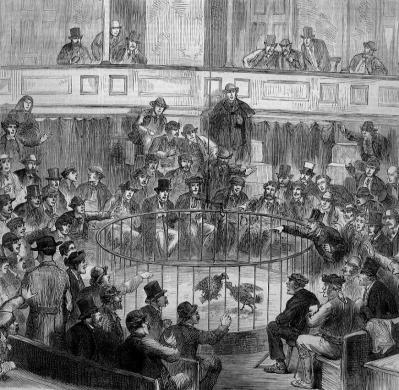
Gambler vs. Gambler
Horse racing was an extremely popular source of entertainment in nineteenth century Europe, due in part to the economic upswing of the Industrial Revolution. Racing’s popularity was boosted further by pari-mutuel betting. Joseph Oller came up with the method in Spain while watching arguments break out over cock fighting bets. He created the pari-mutuel system to benefit the learned bettor. Essentially, he sought to cut out the bookmaker and his ability to fix the odds. Instead of each gambler betting against the house, Oller’s method pits gambler against gambler. The odds of winning are in flux until the betting period ends.
In the pari-mutuel betting system, all the bets for a given horse are pooled together. After the winner is determined, a commission percentage is taken from the grand total of all bets placed. This goes to whoever owns the means to run the betting. The remaining amount is divided by the total amount wagered on the winner, giving x profit per dollar wagered. If this works out to say, $10 per $1 wager, then the odds of winning were 10-1. The various systems used to tally the bets came to be called totalisators.
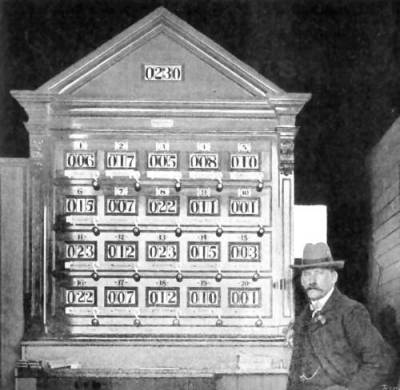
Totali-what?
In essence, a totalisator or tote board is made up of a number of counters that are used to display running totals. The term quickly became synonymous with pari-mutuel betting. Tote boards are largely associated with sports betting, but they are also used to keep track of and display pledge amounts during telethons.
In early pari-mutuel history, bet tallies at the racetrack were kept manually on chalkboards. As pari-mutuel betting increased in popularity, the totalisator concept was adapted to keep up with real-time demand. A number of different small machines were built to do the counting and brought to the track as a betting alternative. Some tote board owners went out and met the crowds in wagons.
Bettors placed more trust in the machines than they did the guys with chalkboards, but their confidence was a bit misplaced. The machines were ultimately operated by humans, some of whom were not above entering phony bets. Even so, horse racing continued to grow in popularity. Several tote boards sitting side by side were necessary to keep up with the demand. At larger racetracks, the small and portable tote boards began to move into dedicated buildings so they could handle more bets.
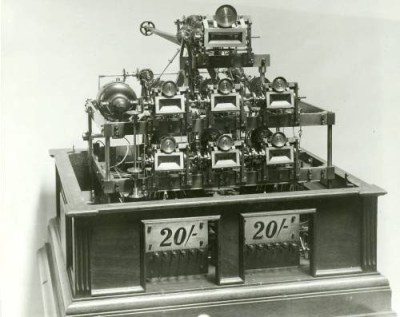
Electing a Winner
George Julius was a lifelong engineer. He took an early interest in mechanical operations, particularly those of clockwork. Julius was born in England, but moved to Australia and later, New Zealand as his father was promoted within the Anglican Church. Julius studied mechanical engineering and worked in both railway and timber engineering in Australia.
In his spare time, Julius built a machine to automatically count election votes. He presented it to both the Western and the Federal Australian governments, but neither one accepted his design. A friend took Julius to a nearby racetrack to show him another possibility for his machine. Because of his religious upbringing, he had never been exposed to horse racing or gambling. Julius was intrigued by the logistical problems inherent in pari-mutuel betting, and sought to create a device that could handle all the parallel arithmetic. He spent the next four years building a small automatic totalisator out of his garage.
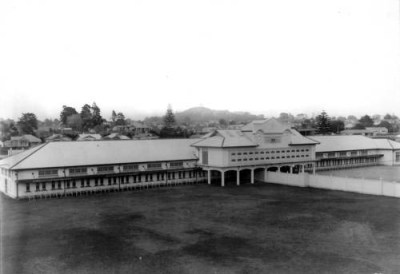
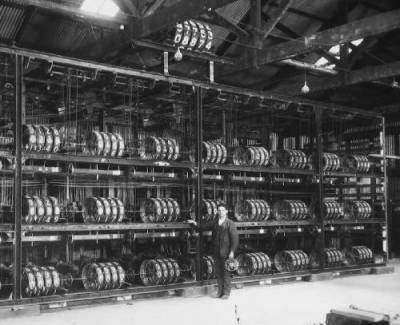
Multi-Story Computing
Julius’ first commercial automatic tote was installed in 1913 at Ellerslie racetrack in Auckland, New Zealand. The machine was so large that it required its own multi-story building called a tote house. The Ellerslie machine could perform simultaneous bet summation for up to thirty horses. It displayed in real time the approximate odds for each horse to win, the total running amount wagered on each horse, and a grand total of wagers made in the event. The first floor of the tote house had thirty ticketing windows where bets were placed. The rest of the building was devoted to totalisator machinery. The tallied bets and approximate odds were displayed in the second floor windows of the tote house. These numerical displays were actually a part of the machine—huge, readable numbers on counter wheels.
This first automatic totalisator was completely mechanical and operated similarly to clockwork. Power came from large iron weights attached to bicycle chains draped over drive sprockets. The Ellerslie machine was only used for five years before it was replaced by an electromechanical tote. This marked the beginning of Auckland Totalisators Limited (ATL), which went on to dominate the international market for the next 50 years.

The betting process begins when a ticketing agent pulls a lever corresponding to the horse chosen by the bettor. This lever tugs at one of the 900 steel wires running overhead—one wire per horse, per ticket window at thirty apiece. You can just make them out in the upper right corner of this picture. Bets were taken in the smallest monetary units, and each pull of the lever incremented the bet.
In order to convert the parallel input from all the ticket windows to serial tallies for each horse, Julius invented a mechanism he called a shaft adder. The totalisator at Ellerslie racetrack had one of these mechanical differential adders for each horse. A shaft adder consisted of several sets of epicyclic gears situated along a common shaft. An escapement wheel attached to each gear set prevents it from rotating freely. The shaft adders are summed together to form the running grand total, which is displayed at the top of the tote board. A separate mechanism gave approximate odds using the horse’s current bet total, the current grand total, and some trigonometry.

Tote boards quickly became electromechanical. Instead of large weights, the counters were driven by motors. Multiplexed rotary switches allowed the ticketing machines to share an escapement wheel on the shaft adder.
ATL installed totalisators all over the world, completely dominating the market until digital computers made them obsolete. Tote boards were among the first real-time multi-user systems, and helped pave the way for parallel processing.
Main image credit: Brian Conlon

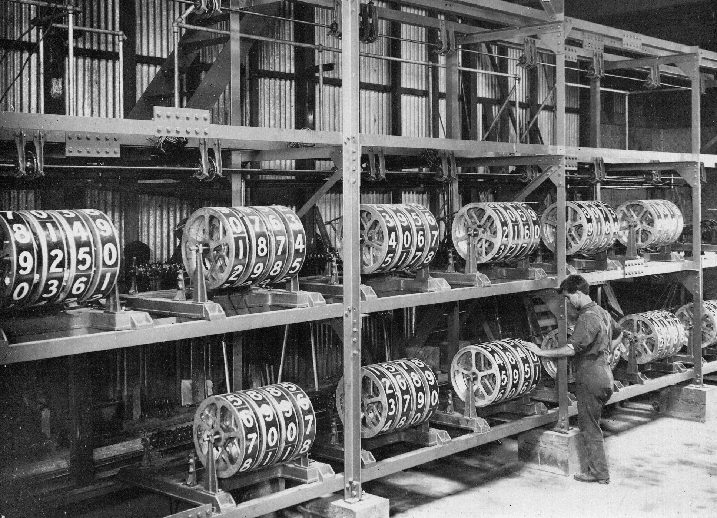















I’ll always associate these boards with The Sting: https://youtu.be/vo9Clj9STUM?t=5290
video unavailable
And I didn’t even know horses gambled!
American Totalisator was one of the early investors in the Eckert-Mauchly Computer Corporation.
Regarding a side-issue, I really don’t know why countries use machines to count votes in elections. In the UK we use old-fashioned votes, on paper, slipped into locked ballot boxes. After voting closes, human beings open the boxes and count by hand.
It’s still quick enough to get the results, usually by the end of the day. There’s somebody to blame if anything goes wrong. The votes are there for recount. And fraud is much harder, there’s no machines to tamper with, just people who can be checked, and threatened with prosecution to keep them honest.
Voting machines seem like a solution in search of a problem, and they’re a BAD solution! So much can go wrong, and so many ways of rigging them. Computer voting much more so. Human counts are better, and elections are important enough to take every practical measure to eliminate fraud and potential fraud.
Never been in Chicago on voting day have you?
I agree that a paper based voting system has definite advantages from an audit perspective. However, manually counting the votes quickly becomes unfeasible as the number of items voted on a single ballot goes up.
Here in Canada we just had a federal election which was a simple paper ballot because you were only selecting a single candidate. However, for the most recent municipal election each ballot included several offices. In this case the paper ballot was optically scanned as it was put in the ballot box – preserving the actual ballots for audit while automating the counting process.
We use the same system in France, and I think voting machines aims to reduces the costs of the election.
You must print one paper per candidate per elector.
So for the presidential election, you can have 20 candidates times 45 millions of electors, and you must distribute them in each voting office (at least one per town, often more, more than 100 000 in total)
Repeat for each election
On the other hand, a voting machine can be reused.
It is the main argument used here by the proponent of machines to count votes.
But I agree with you, the current system with paper works fine, as we said: if it’s not broken, don’t fix it ;-)
And at least in France, counting votes is free: it is done by volunteers.
> it is done by volunteers
So it is in Germany. And this is one aspect often overlooked in this mechanical-vs-manual vote discussions: doing the tallying by hand, with the help of volunteers makes democracy literally palpable, because people get the chance to take part in the process. Suddenly it becomes “our democracy” and not “some detached machinery out there”.
I think this is a very important aspect.
The population of the United Kingdom is not quite the combined total of California and Texas.
Yes- but campaigning the 2012 US presidential election cost something like 300 times what the last UK general election did, or 60 times as much per person. With that much money available you’d think distributing ballot papers and having volunteers count them wouldn’t be a logistical roadblock.
Well that means you’ve more people available to do the counting.
w
I agree to some extent with every comment in this thread (thus far) but one item overlooked is that humans make mistakes. Even the most honest vote counter can screw up. The scope of error depends on the level of elections, and in what digit the mistake was made. A miscount in the ones or tens won’t make much difference in all but the smallest of local elections. But when adding 16543 and 27980 it is very significant that the 6 in the first number was supposed to be an 8, or a 5.
Personally I prefer a hybrid system of paper ballots inserted into electronic machines.
Counts are going to be highly accurate and more repeatable as compared to humans, as well as much much faster (the ‘live’ count is nearly instant).
Meanwhile physical paper trail exists for every vote in the case of a screwup.
A significant digit mistake becomes obvious, since we can see that a stack of 15k votes for a candidate is visually obvious compared to a 10k stack.
Also, the US electoral system at the national level is pretty wonky. Oddly enough, an error of just a few thousand is significant, since, essentially, winning a district or state by 1 vote gives you winning points and the looser gets nothing.
Bush won his elections fixing marginal victories in Florida giving him all the Florida points. (if you believe the conspiracy theory).
In the US, at the national level, fixing the vote in just one small county in a neck and neck race could be the difference. All digits could be potentially significant.
There is a lot more about the tote machines, including the first mechanical tote at Ellerslie, at https://www.cs.auckland.ac.nz/historydisplays/SecondFloor/Totalisators/TotalisatorsMain.php
An interesting variation on the early totes was the use of ball-bearings or marbles to represent bets. One of these is described at https://www.dropbox.com/s/lezh0n3e57xph66/HodsdonSpielLR.pdf?dl=0
but there were others.
Come, come, you can do better. At least mention Conlon’s magisterial pages at
http://members.ozemail.com.au/~bconlon/
sidd
Thank you Sidd. You have brought significant additional traffic to my website. Magisterial is high praise indeed! On the subject of the Julius Tote, The Institution of Engineers Australia have awarded an Engineering Heritage International Marker to the Julius Tote. I have described this on my website at http://members.ozemail.com.au/~bconlon/george_julius_genealogy.htm under the heading “2015 A Dream Come True.”
(Sigh) …. How is it that people can so quickly lose sight of the reason behind electronic voting? Voting with paper ballots is fine, until the following scenario happens: the difference in the number of votes between two opponents is smaller than the number of spoiled ballots. At that point, both opponents immediately begin fighting over how the spoiled ballots will be interpreted / counted / recounted, in order to determine the outcome of the election. In happened in Florida with Bush vs. Gore, and the idea behind electronic voting was to make sure it never happened again, by eliminating any possibility of spoiled ballots.
Since then, there hasn’t been a major election in the U.S. where the margin of votes was small enough for the spoiled ballots to have any effect, so people have lost sight of the reason why electronic voting was instituted. But if such an election does happen again, rest assured that people will once again be calling for some way to “solve” the problem of spoiled ballots, just as they did 15 years ago.
Personally I’d call for a do-over in that region. I realise that knowing the previous result will cause people to vote differently, but it’s still people, deciding. They’re just voting how they would have the day after. Better than the black comedy that happened with Bush, where it basically came down to Republican judges outnumbering Democrat judges.
Eagle Farm Racecourse in Brisbane, Australia still has its mechanical tote machine in place.
I worked on a few tracks in Western Australia and one still had the wiring in place for the electro-mechanical sales terminals I think. The tote sales units would be slid into place on wooden runners, plugging the unit into the fixed wiring. Each widow had a place with a connector board of what looked like spade plugs. About four rows of twenty pins, wired with trunk line phone cable to a central location in the back of the room. The smaller tracks shared their sales units, they’d be installed for race day then trucked to the next track.
I know the Julius Tote at Eagle Farm Racecourse well. Have a look at http://members.ozemail.com.au/~bconlon/efmuseum.htm I worked on the computer totalisator systems that superseded the Julius Totes in Queensland.
As you wrote there is a lot of this history in Western Australia. I too have seen what you describe. Have a look at http://members.ozemail.com.au/~bconlon/george_julius_genealogy.htm under the headings “A trip to Perth March 2011” and “More Perth January 2012” near the bottom of the page. That famous West Australian Engineer C.Y.O’Connor was George Julius’ father in law.